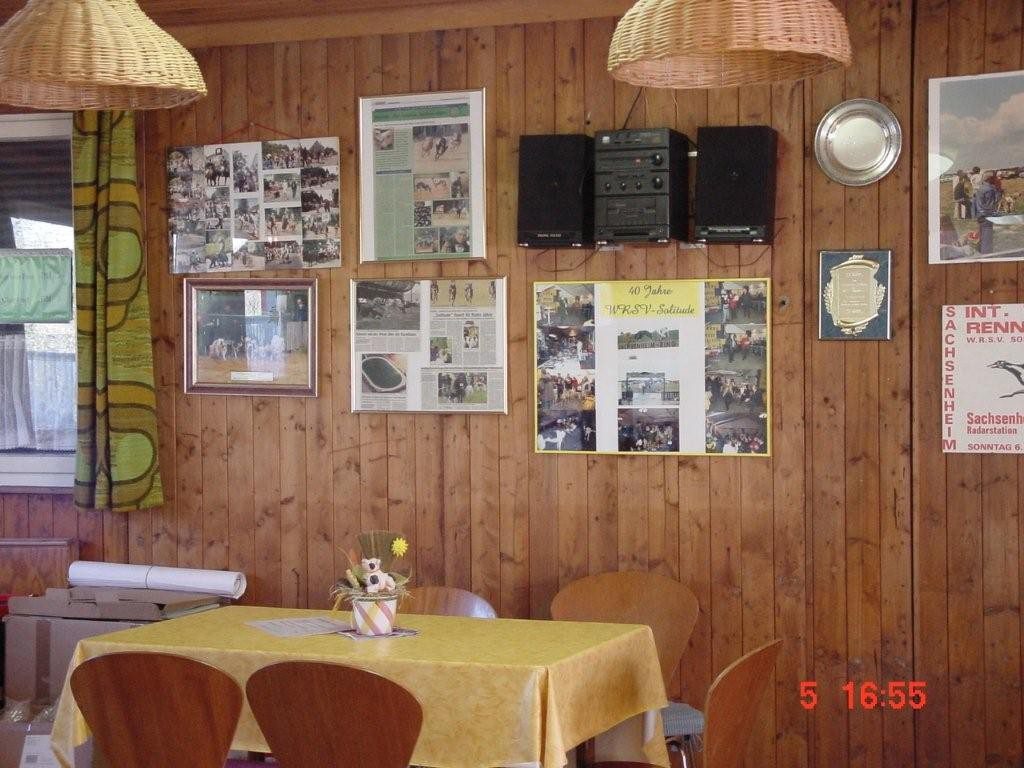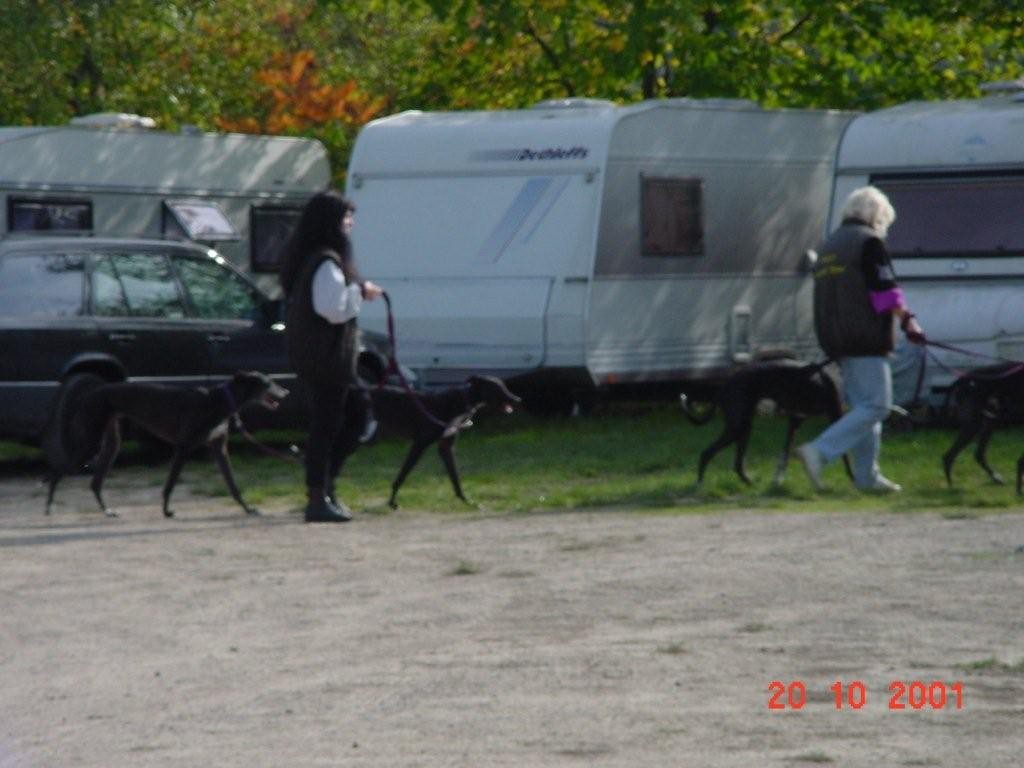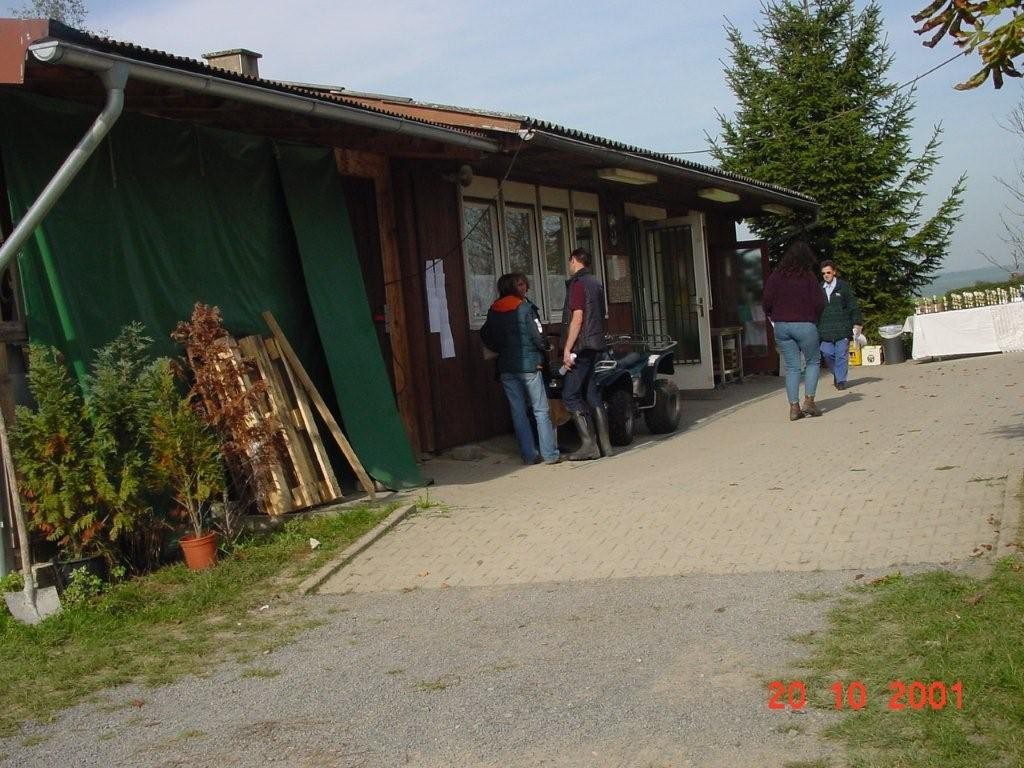Published in 2009 Summer issue of Tally Ho
KC & I had the good fortune to live in Germany from 1993 through 2003. It was during this time that we were introduced to the German Racing and Coursing Clubs. The club closest to our village of Neuhausen a.d. Fildern was WindhundRennsportverein Solitude e.V (Sachsenheimring).
We first discovered this club in 1995, prior to even owning our first borzoi.
KC & I knew that one day we would own a borzoi and decided to find the sighthound community in Germany. We attended a large show in Stuttgart, Germany where we searched for sighthound owners. Interestingly enough, at this particular show, the sighthounds were not inside the pavilion like all the other breeds. The sighthounds were outside so that the ring sizes could be made larger. Well, we did not discover that right away, but we did find a “meet the breed” booth with a German couple and their pair of borzois inside. Not known to us at the time, but this couple would become our borzoi mentors and lifetime friends.
After some questions, we were not fluent in German and they were not fluent in English, we learned about Club Solitude. The very next weekend we decided to explore where we thought the club was located and see what was what. After some trial and error we found the sign that announced the entrance. The entrance was a dirt road in a farming area that led to what appeared to be a fairly large clump of trees. The closer we got to the trees the clearer the picture. The trees were not in a clump but were circling a pristine park like cleared area. As we approached the turn into the area the first thing that we saw was a cabin sized structure with a parking lot and RV parking area with hook-ups. None of this is visible from the main highway. As we pulled up into the parking area there were many folks walking their sighthounds, many with racing silks, some not. We arrived during a weekly training session. We parked our car and started towards the structure. The structure was their clubhouse.
Inside was very busy with folks using a large meeting / dining area with a bar and kitchen. Freshly prepared hot lunches were available along with beverages of your choice – alcoholic and non-alcoholic. We purchased a hot lunch and beverage and went outside to the outdoor patio with long picnic tables and shade umbrellas abound. We took a position at the end of a table where we could see the goings on outside.
From here we could see what looked like a professionally built dog racetrack. It was a beautiful 550-yard oval sand based track with a pristine infield. There were 3 start boxes located at different locations to provide different race lengths; 280 meters, 360 meters, and 480 meters. At the 480-meter start box was a flip sign that showed the number of which run was to be on deck. This could be seen clearly from almost any location.
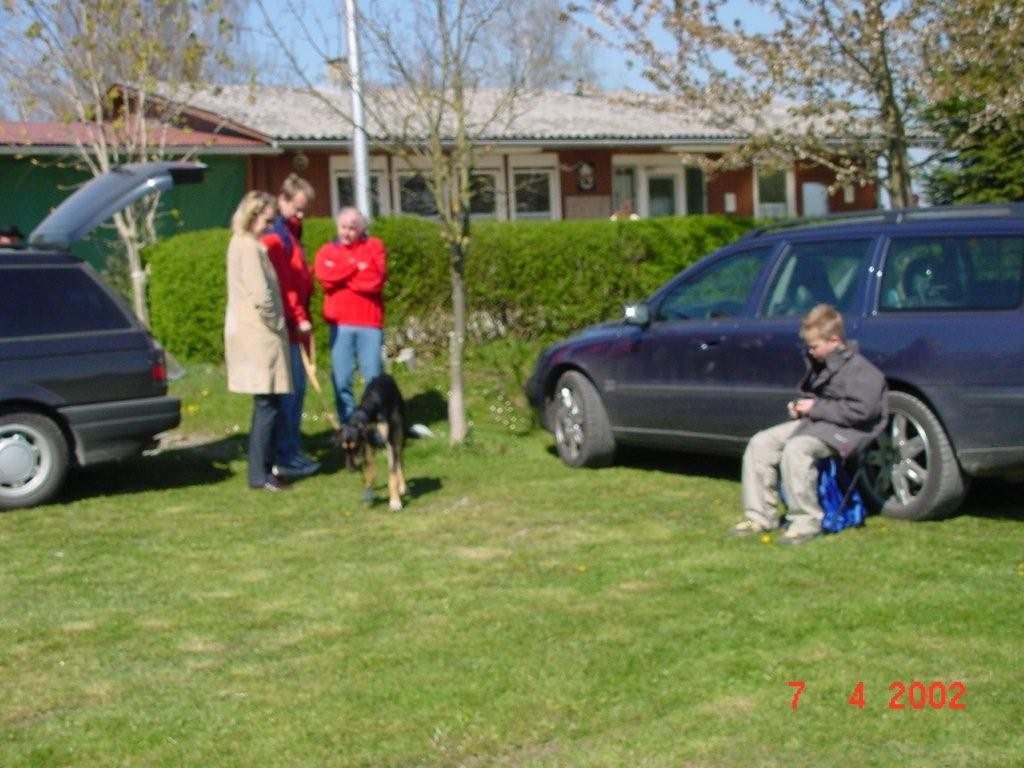
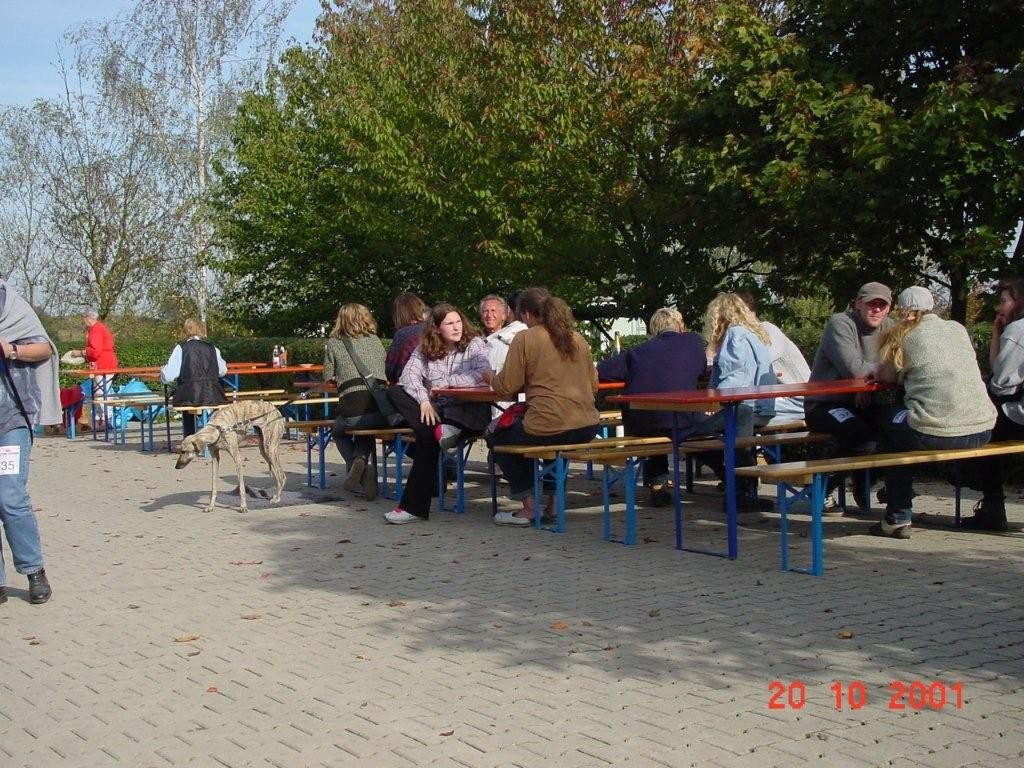
As a dog or dogs were loaded into the start box and then run on the track the start box operator would flip over the next number allowing the next in line get their hounds ready. We sat for some time just watching the action.
After some amount of time a lady joined our table and in broken English introduced herself. Again, we had no idea the impact this person would have in our lives. She had driven from Switzerland to train her borzois. It was through her
that we were eventually introduced formally to the Borzoi community both locally and internationally.
We learned that this club was active between Easter and the end of October and opened every Sunday. Twice a year there would be a show and race weekend and twice a year a two day
coursing event. We made it a habit to show up every weekend and help out with the hounds as much as possible. We walked hounds for warm up and cool down. We took the hounds to the
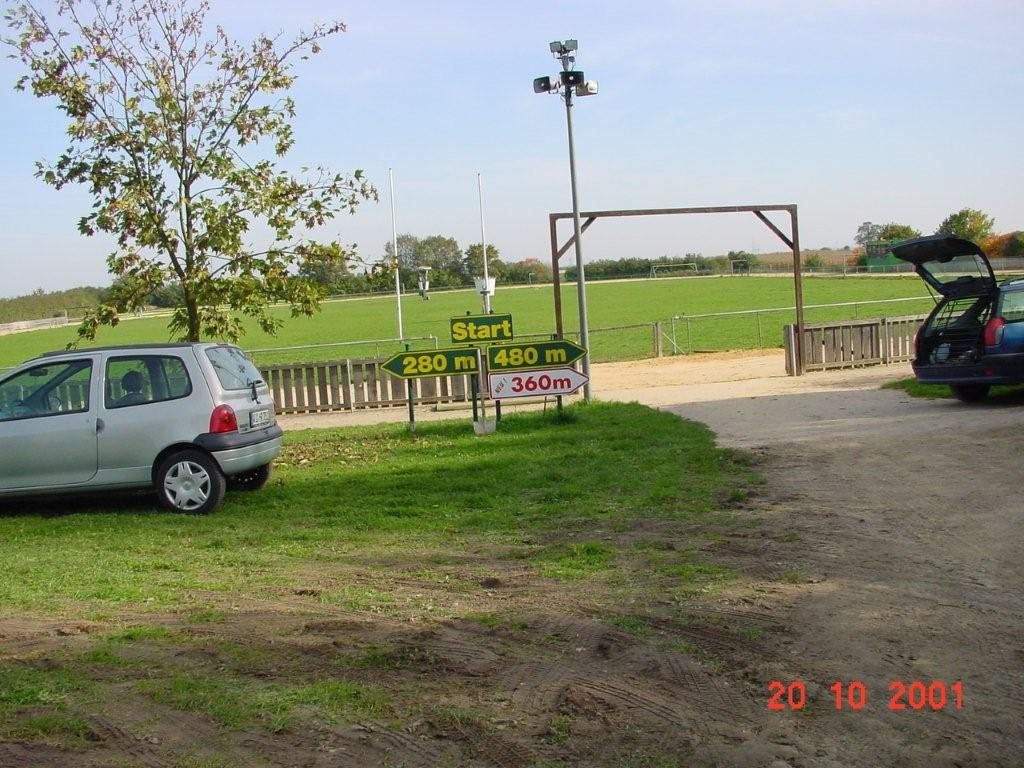
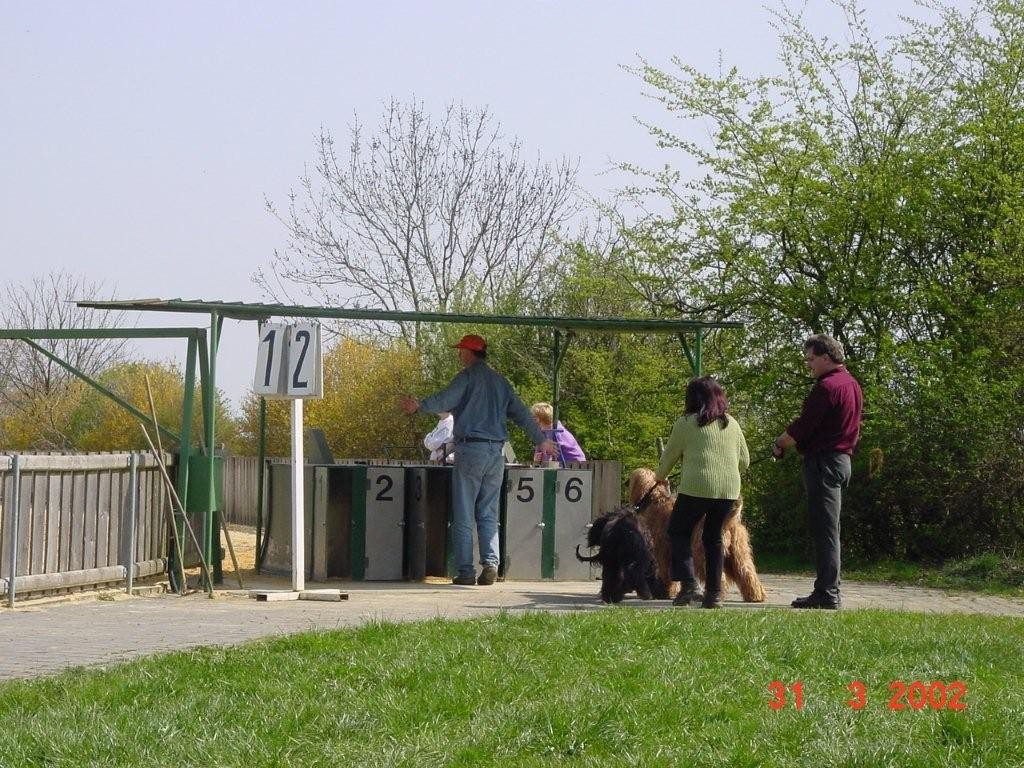
wash down area and cleaned the sand from their toes and sprayed them down to Clubhouse in the background
Outdoor patio area View of track from clubhouse cool them or prepare them for running. We helped in maintaining the track and along the way we got to know everyone and became close to several. All this before we had our first hound.
Then there was the day we brought our first borzoi, Silkenswift Ambassador, to the club. He was an American bred hound and his line was unknown there. Here at this club and all clubs throughout Germany, running on the oval is the ultimate dog sport. Speed rules and only the best would be successful on the oval and with success brings respect. The lure operator told us to bring this green puppy to the track and let him sniff the lure. Here the lure was a real fur
of some animal, often deer or rabbit skin. Surrounding the fur was several 2’ long stringers of yellow caution tape. The lure was easy to see and was very interesting to the hounds. The lure operator said
that once the dog got to sniff the lure he would then bounce it a little to try and encourage interest to chase but not to be too disappointed as only very keen
hounds get it at this age. We walked ambassador to the track and as soon as he saw the lure he sprung into action and attacked it like it was something he was
born to do. The lure op then bounced it and Ambassador took off after it like a pro. The lure op got so into it that he ran Ambassador the entire way around the track. Many of our new friends were watching and almost all exclaimed that there is a new dog in town and he will be a force to recon with when he is old enough to compete.
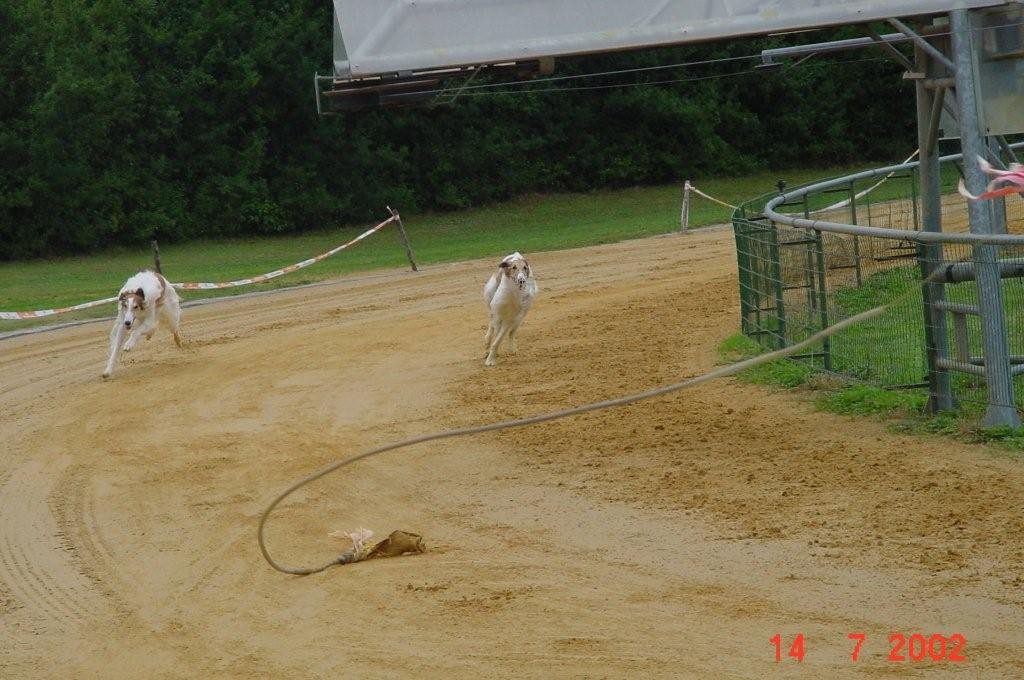
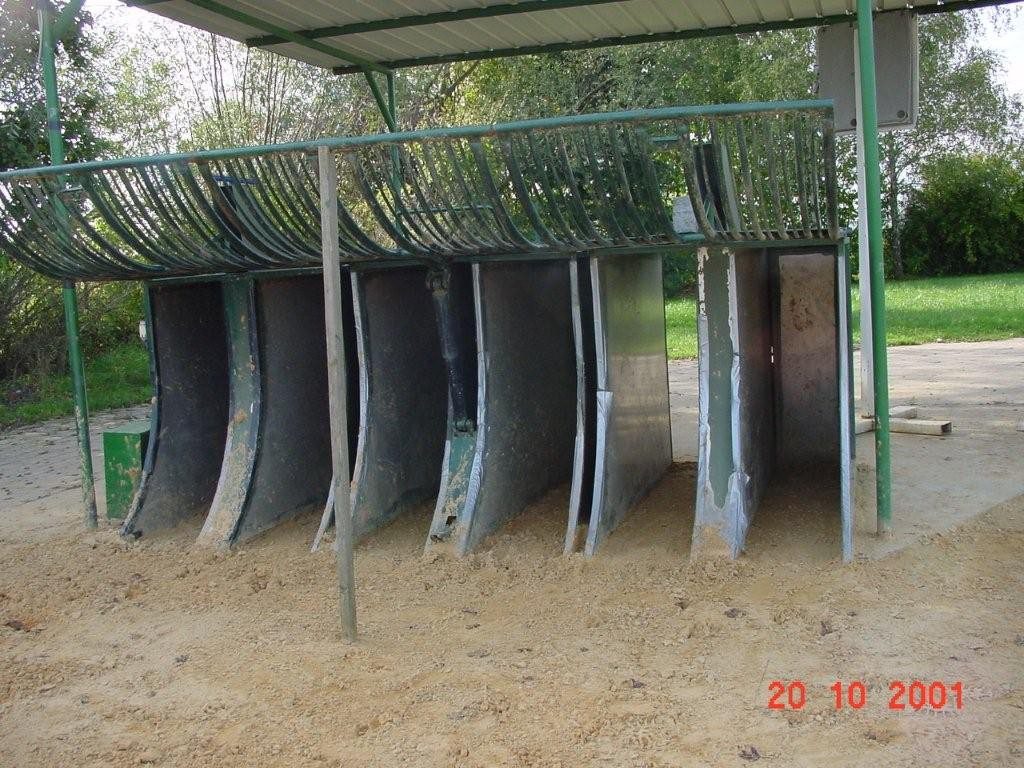
With almost all clubs, to join, you must be sponsored by other members and voted on. We had the required sponsors but were not certain that an American couple was going to be welcomed into their German club by majority vote. The
day came for the vote and we were unanimously voted into the club. By the time the vote was taken we had learned the ways and politics of the club and knew what was to be expected.
First we had to decide if we would be working or non-working members. A working member agrees to be assigned to a team and obligate to 40 hours of work for the club during the season. A team would have a specific number of weekends during the season where they would be obligated to be at the track to run the training sessions. Depending on your skills or interests you could be on the
kitchen crew, cleaning crew, field crew, equipment crew, lure operation, start box operating, etc. Your hours were recorded onto a public chart in the clubhouse so that all could see who was doing what for the club.
During event weekends; remem-ber I mentioned that each club in Ger-many is assigned two show/racing weekends and two coursing weekends per running season, all of the working members are required to work. During the week leading up to an event weekend the track, infield, parking area, clubhouse, and associated areas are cleaned, prepared and made ready for a weekend of use. The club mem-bers took a lot of pride in how their club was presented to the public. Dur-ing event weekends many of the local residents and local government offi-cials would be present so it was im-portant to put on a good face.
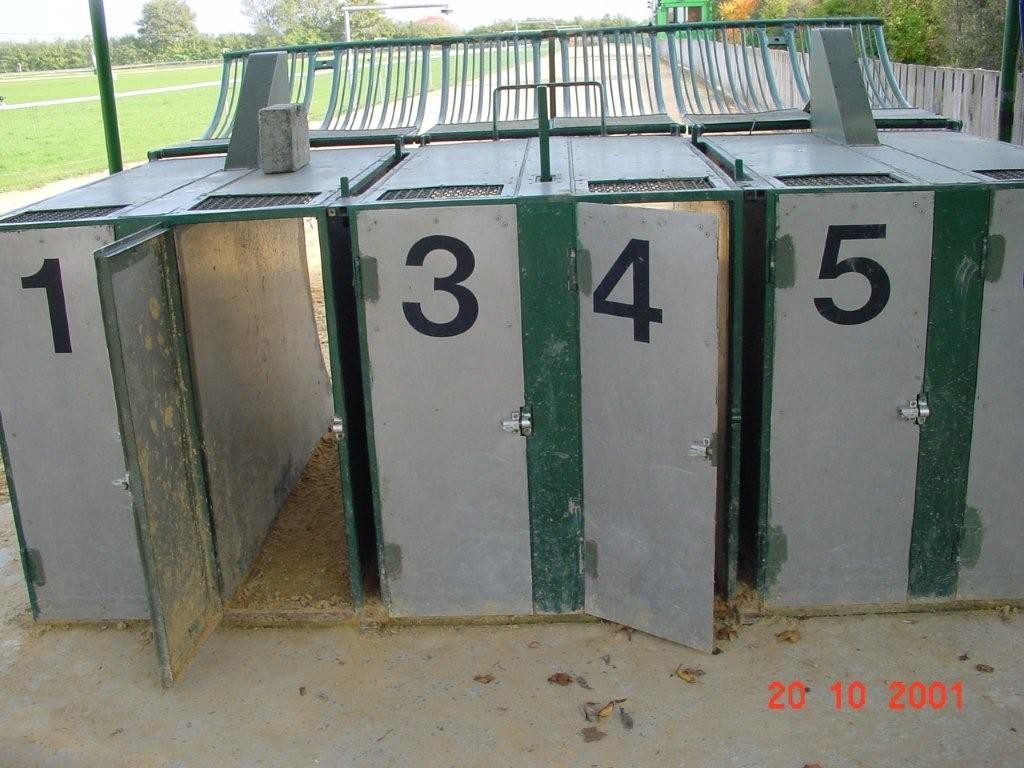
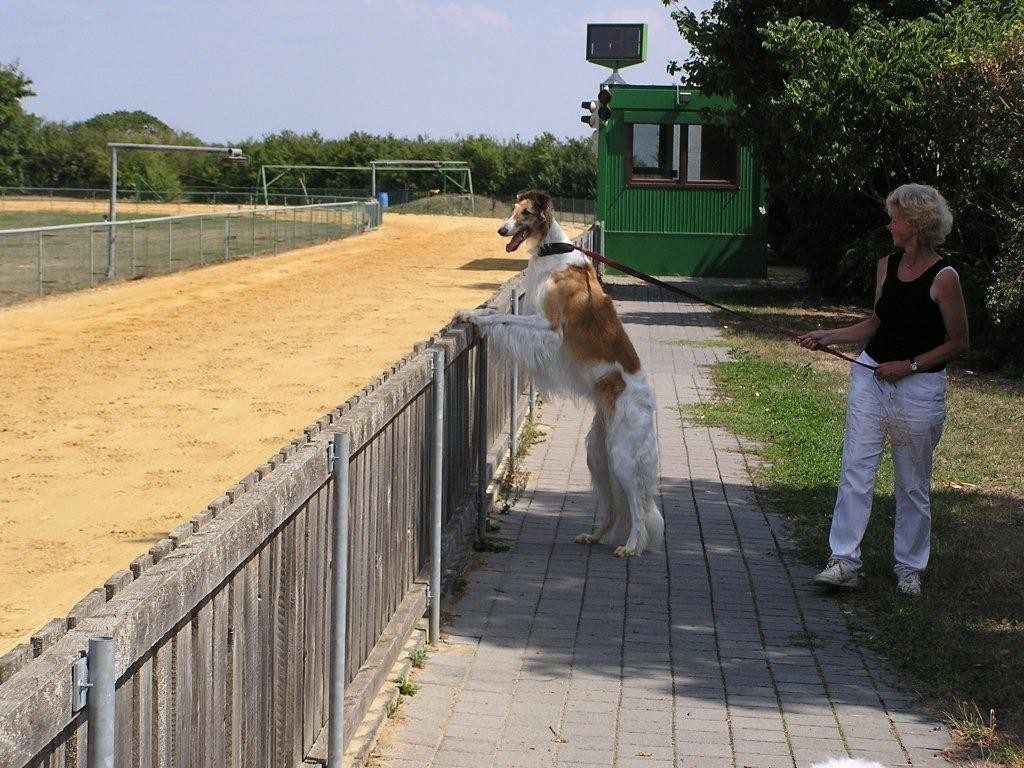
At the end of each running season a party was held at the clubhouse. Dur-ing the presentations the work chart was evaluated and those members with the most hours were presented with a special award and recognition. The members that did not put in the required 40 hours were not embar-rassed by being mentioned but were assessed the amount required for a non-working member. Each club had their own membership amounts. Club Soli-tude assessed the working members about $150.00 and year and a non-working mem-ber $300.00 per year. This seems to be a lot of money but membership has its advan-tages. The clubhouse and facilities required a significant amount of operating capital to be maintained and kept in good order. Along with dues the kitchen made money and the training sessions made money. As-signed weekend events made money on the entries, kitchen, and vender space. As a member, not on a work assignment, your hounds were charged a significant reduced
amount for training sessions. As a member on a work assignment, you ate for free and hounds run for free. Of course, you were eligible to vote in all matters of the club as a member. During the year there were several club functions <beer fest type par-ties> that were open only to members and their immediate families. These are free to the members.
One such event was the annual New Year’s Eve party – hounds invited. Most would bring their campers or sleep in their cars in order to stay the night. The gates were closed and until the party really got wound up the hounds were free to roam. Food, drink, comradery, dancing, singing and NO FIREWORKS were the evening’s plans. Then in the morning, breakfast followed by a New Years Day walk in the open lands around the club – most hounds off line. This is amazing to experience. We have been on walks with as many as 30 hounds off line and searching here and there.
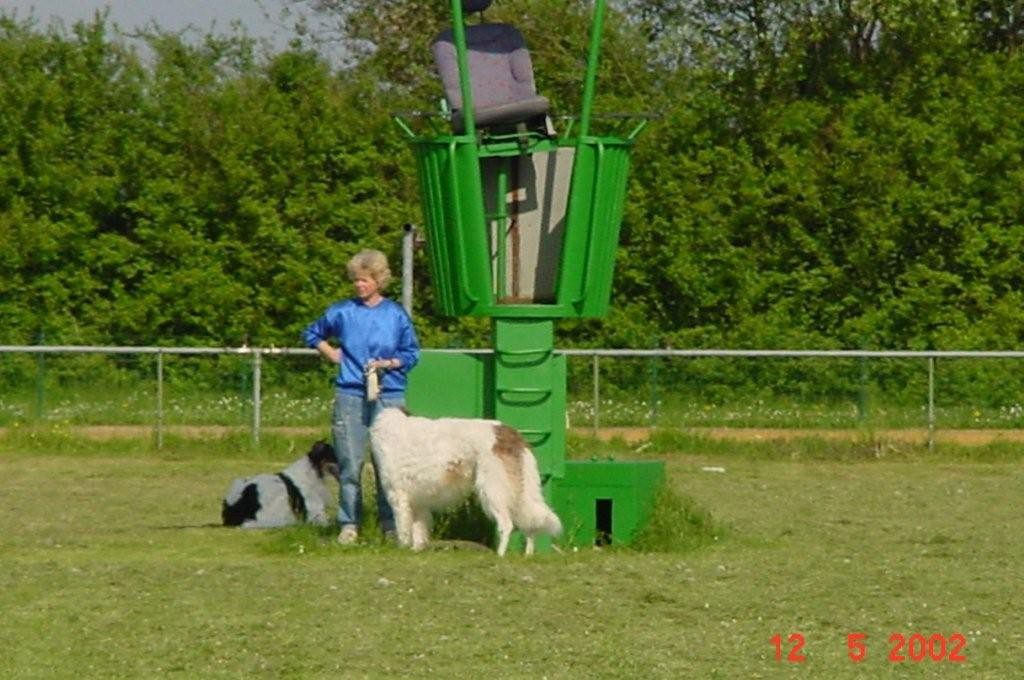
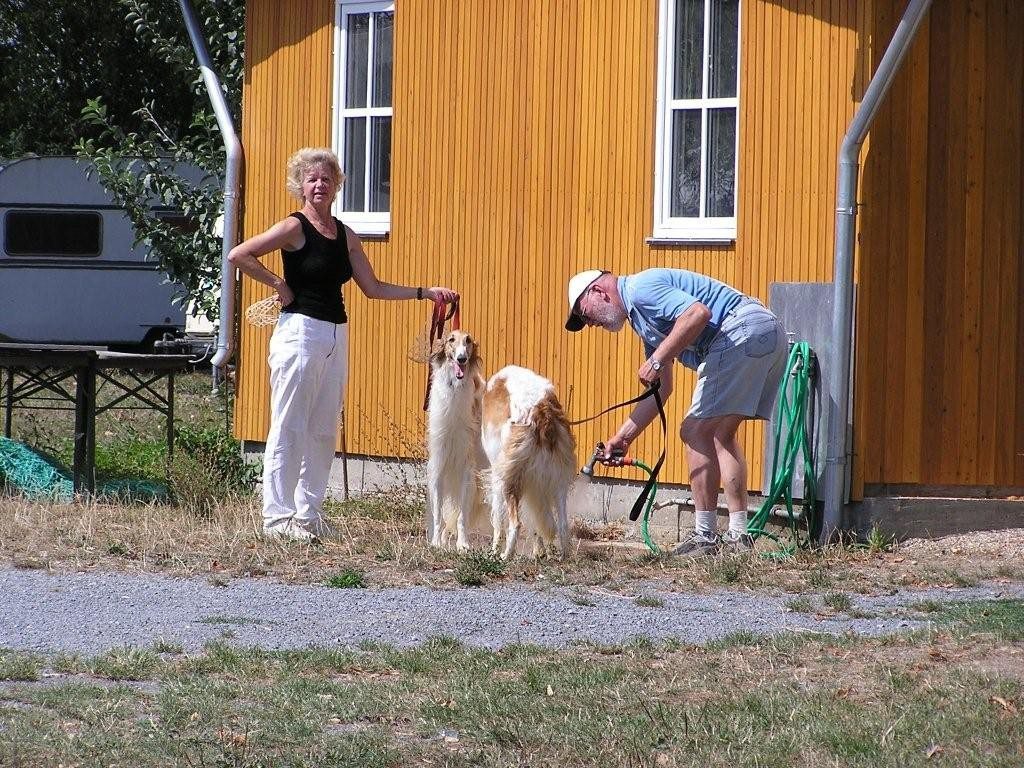
Then around noon, a light lunch is served while cleanup takes place. The clubhouse is buttoned up and closed until Easter clean up the weekend before the official opening of the running season on Easter day.
At the time we left Germany in late 2003 there were 45 clubs in Ger-many with clubhouses and permanent facilities. Most of these were within a day’s drive from anywhere in Germany. They were open either every Saturday, Sunday, or Wednesday throughout the running season. When training our hounds to be in condition for major running events we could train 3 days a week within a 2-hour drive of our tiny village.
Each club focused mainly on training and had a structured plan to have your hounds ready for either certification or events. In order to participate in events, your hound had to have a racing or coursing license. To obtain a license a hound must run six times with competition with 3 different judges. If at any time the hound did not complete a run or run clean you had to start back at run number one.
In the next Tally-Ho, I will write about the coursing and racing rules used in the FCI.
Room for RVs and Campers w/power
The clubhouse with new extension being added
